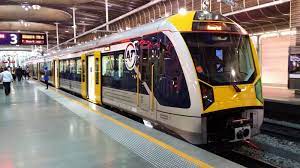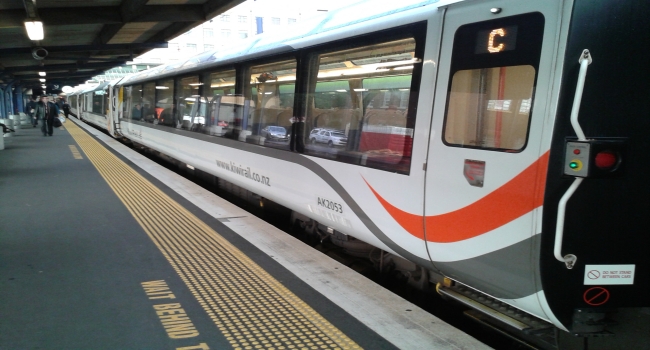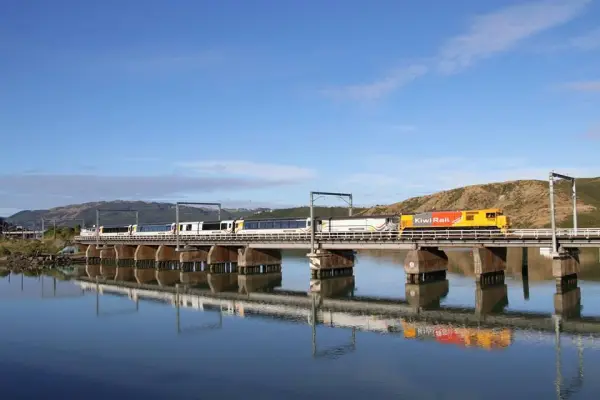Opinion - Today, Auckland Transport and KiwiRail have announced the Rail Network Rebuild. Auckland’s entire railway network will be closed in stages and rebuilt, which has come as a shock to most people. Stage one will see the Onehunga Line and the Newmarket–Ōtāhuhu portion of the Southern Line close from 26 December 2022 until late March 2023. Once that work is done, the Britomart–Ōtāhuhu portion of the Eastern Line (known to railfans as the Westfield Deviation) will close until December 2023. There will be further stages of closure encompassing the rest of the network from late 2023 to 2025.
This is in addition to the current closure of Papakura–Pukekohe, which is being electrified and won’t resume service until late 2024. It appears Te Huia and the Northern Explorer will be able to continue operating, at least for 2023, and freight must get through.
I’m writing this update to jot down some reactions, answer a couple of questions, and raise some more.
What on earth is going on?
Rails sit on sleepers, which are concrete or wooden supports laid perpendicular to the rails for stability and load distribution. The rails and sleepers sit on a bed of ballast—crushed rocks—which provides drainage and additional load distribution. The ballast is laid upon formation: compacted gravel and earth that forms the base of the railway line. Rails, sleepers, and ballast can often be renewed with brief shutdowns (and they need to be renewed regularly, e.g. wooden sleepers tend to have a lifespan of 20–30 years).
It’s more of a challenge to renew the formation, and that is, evidently, what KiwiRail needs to do. They will be digging up the entire line and remaking it. Why? They have not released information to explain why the network is, evidently, in such a bad state. It’s one thing to need to remake specific portions, especially those on difficult soil—but the entire network?
KiwiRail and Auckland Transport’s press releases allude to the age of the network, although they over-egg it: sure, the first line opened in 1873 (Auckland–Onehunga), but it has been substantially upgraded since. The Westfield Deviation dates from 1930 and was built to the highest standards—and you don’t see Wellington’s Tawa Deviation, which is of the same vintage, having a similar shutdown. And why on earth will they need to redo lines built or refurbished as part of Project DART (2006–12)?
The Manukau Line was built brand new in 2012, the Onehunga Branch was effectively rebuilt for its return to passenger use in 2010, and the Western Line was substantially rebuilt in the late 2000s as a double-track line with some brand new alignments (e.g. the New Lynn trench).
The Third Main between Westfield and Wiri is under construction literally right now: why is it not possible to use this line to ensure that there is at least a partial service, with buses filling gaps instead of having to (inevitably inadequately) cover the whole timetable?
Why will it take so long?
I need to be clear here: this just does not happen to entire transport networks in other cities. Moreover, it does not happen with the most privileged transport mode in New Zealand: roads. Imagine if the Auckland Harbour Bridge was going to be shut for most of 2023. People would lose their minds. But that’s just the equivalent of one railway line. Imagine if every single motorway in Auckland had to be closed and rebuilt over the next three years. Governments would fall.
There is a simple reason why this and other rail projects take forever and cost bazillions of dollars in New Zealand: we no longer have the institutional capacity and expertise to deliver them efficiently and cheaply. Much of this was lost during the reforms of the 1980s–90s, which ostensibly sought efficiency but instead of trimming fat had a tendency to slice off limbs.
By the early 2000s, New Zealand had lost much of its ability to maintain its railway network properly, let alone deliver major rail projects, and that is only slowly being recovered. Deferred maintenance has become chronic and severe; if you want to imagine the equivalent for roads, imagine if motorways were still of a 1930s standard.
We lack the equipment, experience, expertise, and network redundancy of other countries. I suggest it is time to seriously reconsider and revitalise how we deliver major public works—not just rail—in New Zealand.
How did this happen anyway?
Auckland is paying for the mistakes of the past. This is an unsurprising outcome of rail policy since the early 1950s, when Stan Goosman persuaded his National Party colleagues to discard plans to electrify the Auckland railway network and go all-in for motorways. Ever since, rail has operated at a serious disadvantage to road.
The abandonment of Auckland mayor Dove-Myer Robinson’s rapid rail proposal of the early 1970s confirmed a policy of managed decline: increasingly derelict old locomotive-hauled carriage trains trundled along an ever-contracting network and had steadily reduced timetables. Christchurch (1976) and Dunedin (1982) lost their commuter rail offerings; Auckland was going to be next.
If not for Raymond Siddalls cannily securing a cheap purchase of 19 near-new diesel multiple units from Perth to begin revitalising Auckland’s railways in the early 1990s, the network might well have perished by 2000. Policy papers in the 1980s clearly view passenger rail as having no future in Auckland, and their recommendations explicitly set out how to manage the decline and dissuade remaining train passengers from using the services.
The outcome planners wanted was to cancel every last train—and a convenient way to do that was to point to either/both the rollingstock or the physical infrastructure as being life-expired and unsafe, and to say “nobody uses it anyway”. It is likely that without the introduction of the Perth trains, the only rail that would remain in Auckland would be a single freight line to the port.
The need to totally rebuild the network is a legacy of this half-century of neglect and the intention to let the physical network degrade and become unusable. But questions remain. Once the decision was taken to build Britomart in 1998, rail policy shifted from managed decline to revival. Why, then, are we here now? Why were these issues not identified sooner? Or, more to the point, why were they not resolved sooner?
One revelation today is that some officials have been aware of the need for this rebuild for at least seven months, but only today have elected representatives and the general public been informed. We are seven months behind where we could be in terms of preparing bus priority and bike lanes along key corridors to create options during shutdowns (and, longer term, create integrated multimodal transport).
If this had been identified even sooner, a large proportion of the work could have been done during the periods of dramatically reduced patronage throughout 2020–21. For these shutdowns to come just as patronage is bouncing back from the pandemic—it’s a disaster.
The consequences
I mean it: this is a disaster for rail in Auckland, and for public transport in New Zealand more broadly. The contraction of passenger rail in New Zealand from the 1950s went hand-in-hand with the encouragement of attitudes that rail was unreliable and outdated and that public transport is a fallback for the needy.
Most of the New Zealand public is not aware of just how badly rail has been managed and how severely it has been underfunded compared to networks overseas. All they see is further proof of ingrained local attitudes that you just can’t rely on public transport and that it is a second- or third-rate solution for people who can’t drive.
The desirable sorts of public transport that exist overseas—networks that you want to use instead of bothering with the hassle and expense of car ownership—are a distant dream in NZ. Instead of identifying the actual causes for this massive difference in modal quality (the litany of bad decisions, mistakes, excuses, and funding imbalances), New Zealanders think public transport is inherently inferior and/or that it might work elsewhere but it can’t work here for [insert spurious excuse du jour].
The entire Auckland rail network having to be closed and rebuilt in stages over the next few years will fuel the “cars will always be essential” and “we must have more roads” mantras of New Zealand’s most unimaginative people.
It potentially means a delay to any improvement in frequency for Te Huia and the Northern Explorer. It will be used by people to say better things are not possible: I can already hear the advocates of commuter rail in Christchurch or Dunedin, and the advocates of regional rail nationwide, being dismissed with “you don’t want to end up like Auckland do you?”
Never mind that Wellington’s rail network, the only one to retain hints of modernity in the second half of the twentieth century, has never needed such a severe shutdown because it was never subjected to a policy of managed decline.
Hopefully I am just worrying too much. Hopefully there are good answers for the questions above. Hopefully I’m mouthing off too soon. But it’s yet another frustration in a long list of disappointing and disheartening moments in New Zealand railway history. We once had a good passenger rail network, and it could have been great; we threw it away, and getting it back is proving a challenge indeed.
An opinion by Dr André Brett published 3 Oct 22.
Dr André Brett is Lecturer of History at Curtin University in Perth, Western Australia. Dr Brett has written widely on political, environmental, and transport history: he is the author of four books, over twenty scholarly journal articles and chapters, and many other contributions to TV and museums. His most recent book, 'Can’t Get There from Here: New Zealand Passenger Rail since 1920.
Dr André Brett book 'Can't Get There from Here' can be purchase online
This opinion on publictransportforum.nz is for education purposes only and the promotion of better sustainable environmentally friendly passenger rail travel in Aotearoa New Zealand.



